Improve Your Mass-Finishing Process
Mass finishing includes a group of economical and useful processes for improving surface finishes and for deburring, deflashing and cleaning parts.
Mass finishing includes a group of economical and useful processes for improving surface finishes and for deburring, deflashing and cleaning parts. Mass finishing is a common operation prior to electroplating, painting, anodizing and other finishing processes because it's easy to do, reliable and low in cost.1
Mass finishing uses media to cut or burnish, a compound-water solution to clean and remove soils, and the parts to be conditioned, all of which are combined in a "mass." Hence the name, "mass finishing."
The equipment used for mass finishing generates a differential action between media and parts. It is this movement that performs the work.
Types of Mass-Finishing Equipment
Round Vibrator. Round vibrators are easy to use and easy to automate. They require the least plant floor space, develop excellent surface finishes and can be adjusted for processing of various shapes and sizes of parts. Even zinc die castings can be processed routinely. Accordingly, round vibrators are the most popular type of mass finishing equipment in use today (Fig. 1).
An eccentric weight mounted vertically inside the center section of the doughnut-shaped bowl provides the vibration. Vibratory action can be adjusted for rate of metal removal and feed rate for separation.
Round vibrators normally use the same media all the time and separate media from parts on a built-in screen that returns the media to the same machine.
Tub Vibrator. Older than the round bowl vibrator, the tub-type is less expensive. The primary difference between the two is in the way each handles the mass of media and parts from batch to batch.
Tub vibrators normally require the removal of the entire load through a door in the end of the chamber. The media-parts mass is screen separated externally. Media returns to the tub or to an over-head storage hopper, while the parts progress to the next operation (Fig. 2).
When very long parts are involved, or more than one type of media is needed frequently, or machine cost must be minimized, tub units are often used.
Both the round and tub vibratory machines have open tops, making parts and media accessible during processing. They operate at medium energy levels. Both types are available for either continuous or batch processing and can be obtained with any degree of automation desired.
Centrifugal Barrel. It has two or more rotary barrels mounted on a rotating turret. As the turret rotates at relatively high speeds, centrifugal force is exerted on the contents of the barrels, which rotate on their own axes in the opposite direction, but at slower speed. The great centrifugal force developed in the barrel materially increases the speed of abrasive action. The barrels are closed containers. They process work in 1/20th to 1/40th the time required for vibratory machines. (Fig.3).
Centrifugal barrels are excellent for applications that would require more than a few hours in vibratory machines. Rough surfaces can be made exceptionally smooth and fragile parts can be processed.
Spindle Machines. Parts are mounted on fixtures that are attached to slowly revolving "spindles," which are lowered into a revolving tub of fine media or polishing material. The part simulates the action of a plow in a field of fine media, producing the effect of a conformable grinding or buffing wheel. Spindle finishing performs extraordinary amounts of work in very short cycles of several seconds to several minutes. These units offer the highest energy of all mass finishing machines.
Ideal for parts that cannot be allowed to come in contact with one another, spindles are best known for deburring gears and for polishing die castings and other very high quality work.
Centrifugal Disc. The newest mass-finishing machine has a round chamber with a rotating disc in the bottom. The disc rotates and forces the mass out and up against the stationary chamber wall, where it begins to slow down. The mass slows further as it reaches the top of the load, just before it descends back down the middle toward the spinning disc, where the cycle is repeated. The constantly varying speeds of media and parts generate excellent surface finishes in cycles intermediate between the vibratory machines and the centrifugal barrel (Fig. 4).
Very large parts, small media or very small parts are not ordinarily processed in this kind of equipment.
Rotary Barrel. The "elder statesman" of mass finishing equipment, the rotary barrel, still performs with excellence in many applications. However, it is slow, since it applies the lowest energy of all mass-finishing equipment. It is messy and therefore often confined to the dim, dark recesses of the plant. It requires an operator with much more skill and training than those who operate vibrators, and it is not normally recommended today except in unusual cases.
The barrel can clean, descale, grind, burnish and inhibit in the same media, in cycles of several hours to days. Compound changes are used to cause various cutting and smoothing actions.
Parts can be radiussed in barrels in times very near to those in vibratory equipment. However, almost no action at all will take place in even shallow recesses of parts that are being barrel finished.
Other Equipment Types. One of the exciting aspects of the mass-finishing processes is the modification of equipment constantly being made to meet the ever-complex and broadening array of industrial problems. Multiple-pass, round bowl vibratory finishing machines are an example (Figure 7). These provide long, precise, continuous cycles, virtually eliminating part-on-part contact. They can use one or several different types of media, such as abrasive ceramic or plastic followed by hardened steel. A final rinse section and/or drying of parts can also be included. Very large equipment is available for very large or long parts, compartmented vibratory machine prevent part-on-part contact on even longer cycles, and much more. Contact your suppliers for unique solutions for very difficult finishing problems.
Mass-Finishing Media
In a mass-finishing process, an important function of the media is to separate parts in order to control part-to-part contact.
Abrasive media is the cutting tool in mass finishing. Very aggressive media cuts metal rapidly and removes rough surfaces quickly. Finer abrasive media cut at a slower rate and can further refine rough surfaces to reduce surface roughness prior to plating or painting.2
Preformed ceramic and preformed plastic media are the most popular abrasive types (Fig. 5).
Non-abrasive media can put a bright or even a color-buffed finish on the parts. Preformed, hardened steel media is very popular because it is fast and clean. Non-abrasive ceramic preforms and hardwood media fill other application requirements, the latter even polishing plastics.
Mass-Finishing Compounds
The Solution. The chemical environment in which metal parts are cleaned, cut, abraded, smoothed and deburred is controlled entirely by the compound and water solution. "Solution" is the key word, since water makes up over 99 pct of most of these solutions. And the water itself is important. Variations just in water hardness, for example, can make a compound that is excellent in one locale useless in another.
A poor choice of compound or poor control of its solution flow rate or concentration can materially increase time to do the work, can alter final surface roughness and the color of the parts, their cleanliness, and the tendency of metal parts or metal media to rust or oxidize.3
The best compound in the world for a given application cannot work if the concentration at which it is used is too low! Why? Because many of the ingredients in these products are surface active—they work at surfaces and interfaces between metal and solution, media and solution, metal and air, solution and air, and so on. Surface-active materials have a characteristic minimum threshold concentration, below which they are almost completely ineffective.
So for test purposes it is best to start a bit high in concentration. Prove or disprove the product(s). Then use a bit less to determine which work better at lower concentrations.
Note that this can be dangerous. If the test is not long enough in this latter phase, you may have gone too far and the whole thing is just over the border. Be sure to make these evaluations over extended periods.
Once the proper solution concentration has been established, you should determine the optimum flow rate. Too low a flow rate will reduce the ability of the solution to flush out soil, a matter of simple mechanics. Too high a flow rate is wasteful (and we don't worry about that happening very often). Optimum flow rates vary with the equipment. In most vibratory systems they are between one and two gallons per cubic foot of machine capacity per hour (.13 to .27 liters/liter-hour) of operation.
Once established, write down the solution flow and concentration settings. And be sure these values are checked at the first sign of trouble with the system.
Relationships
Proper interaction of the several elements in mass-finishing processes is the way these processes are kept under control. These interactions have been described in more detail through the "Tetrahedron of Interdependence."4
Simply put, equipment configuration and settings control the action of the mass; media does the cutting; the compound-water solution controls part color and enables or does not allow the media to cut for extended periods of time; and man, in his infinite wisdom, can change things "to save money," while really doing just the opposite!
The relationships in mass finishing are better understood by looking at typical problems and their solutions.
Problems
As with any manufacturing process, mass finishing has its share of "normal" problems.
The process works best if these are kept under control. We'll look at some of the more common problems and the ways we deal with them.
1. "Our media won't cut as fast..." That simple outcry from manufacturing people falls on deaf ears of experienced mass finishers. Why? Everyone knows we're dealing with a very stupid process! It can't not cut as well today as it did just last month. At least not all by itself! But that's what seems to be happening! Okay, so how do we explain this apparent anomaly?
It could be that the media is bad. The odds are certainly against it, but it could be. Media manufacturers have their acts pretty well together these days. Bad media is just too uncommon an occurrence for this to be a probable cause.
A better possibility is that someone bought a different kind of media! Purchasing people do that on occasion! They want to "save money!" If it's still purple, about the same shape and is cheaper, it's better. Right? Ha! Is it really the same thing? Have you compared labels on the cartons or the bags? If the labels differ, have you compared the cut and wear rates of the media and its ability to remove surface roughness? Are they the same?
Another possibility is that the compound and water solution system are not what they should be. Proved and verified many years ago is the fact that this system controls the media cut rate! Since it is far from obvious that compound-water solutions can be so crucial, it is the most often out-of-control portion of the entire mass-finishing system!
Few salesmen understand the solution system. Fewer still are the users who do. And those users who do seldom have significant mass-finishing problems.
2. "These parts are just not clean enough! The color is too dark!"
First of all, to save countless hours of desk-thumping and frustration, make sure that the oily or other soils on the parts being finished are the same as they were when you set up the operation. Manufacturing can make good and valid decisions to change stamping die or tapping lubricants, and heat-treaters may have changed their quench oil. If that is the case, the compound and water solution used in the mass-finishing process may not be able to remove the soils as easily or indeed may not remove them at all. A new compound would be required.
Remember that it's not the fault of the process: the parts are different because the surfaces of the parts are! And until the surface soils are removed, the media cannot effectively work on the parts.
The compound and water solution also controls the color of the parts. Some compounds can make parts lighter in color. If the compound is not a good cleaner, a surface darker in color may result. Or light corrosion can develop, which also affects the color of the parts' surfaces. Some burnishing compounds, however, are meant to produce a darker color to develop a deeper, less "tinny" luster on alloys such as stainless steel for flat ware.
3. "The quality of these parts after painting or plating seems to be getting worse day by day." Ask yourself whether the same alloy is still being used to make the parts. If a casting, has the die been maintained properly? If the surface of the metal is not as smooth or is dirtier when received in the mass-finishing area, the time cycle may have to be extended to remove the additional roughness or soils. And if cycles become excessive doing that, then it's time to repolish or sharpen the die.
Do you still use exactly the same media? (See 1, above.)
Is it possible that corrosion can he a factor? No? Are you sure? It's ruined many thousands of parts where it could not be seen as the cause because it was microscopic. If corrosion can occur, it will. The Irishman named Murphy has a law that demands it! It MUST occur if it can.
Corrosion can occur during the process cycle and, once started cannot be stopped by use of an inhibitor. Fact!
How do we overcome this problem? Simple as compound selection and control. The optimum compound and water solution will not only prevent corrosion, but can maintain the designed cut rate of the media.
4. "Parts burnished (brightened) in steel media are not as bright or light in color as they were." Look at compound and water solution, again. Is the solution-feed system under control, with all pumps working properly? Are the drains clogged or open and free? Are the soils on the parts the same—both organic oils and greases as well as inorganic oxides?
Summary
Mass-finishing systems are probably the most efficient and trouble-free of the popular deburring and surface conditioning methods available today. They leave clean, residue-free parts, uniformly deburred,radiussed or blended all over. These surfaces are ideal for subsequent electroplating, painting or anodizing.
But mass finishing cannot work miracles all the time! It cannot do what it is not allowed to do. It has a considerable tolerance for certain changes, but little tolerance for others.
Be aware. Be aware and understand the portions of the system that can cause problems. Understand that these processes are dumb! They just cannot change by themselves. Someone or something must be the reason for any change.
With such knowledge comes power. The power to take a dispassionate and objective look at any problem that arises, see it for what it really is, and then go about eliminating the more obvious possibilities until the problem and its solution are found. PFD
Read Next
Education Bringing Cleaning to Machining
Debuting new speakers and cleaning technology content during this half-day workshop co-located with IMTS 2024.
Read MoreEpisode 45: An Interview with Chandler Mancuso, MacDermid Envio Solutions
Chandler Mancuso, technical director with MacDermid Envio discusses updating your wastewater treatment system and implementing materials recycling solutions to increase efficiencies, control costs and reduce environmental impact.
Read MoreDelivering Increased Benefits to Greenhouse Films
Baystar's Borstar technology is helping customers deliver better, more reliable production methods to greenhouse agriculture.
Read More




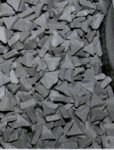
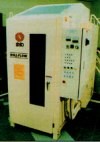

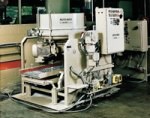
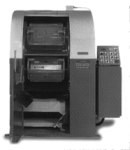

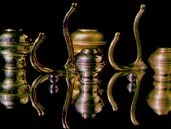









.jpg;maxWidth=300;quality=90)





